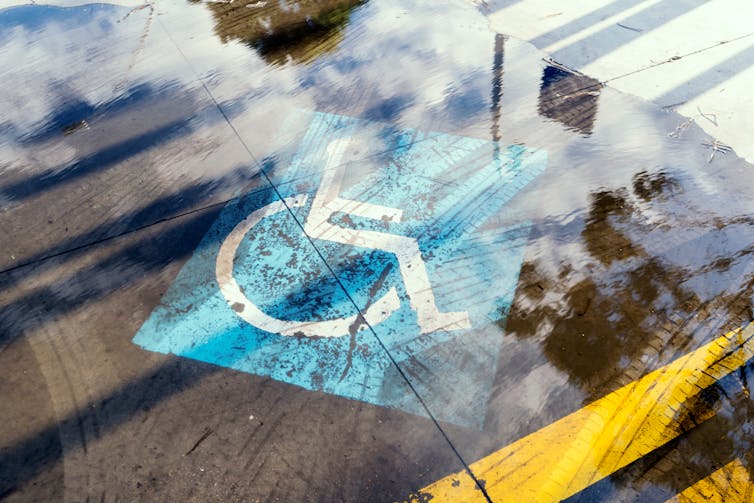At 3pm on April 23, an unusual warning sound was emitted from millions of phones across the UK. This was the first test of the government’s national emergency alert system, which will eventually be used to warn people about nearby flooding, fires and other hazards.
Work on this has been underway for several years, and as an expert in flood risks and climate change adaptation I have taken a keen interest and even published research on how the public might respond to these kinds of warnings. The UK’s Environment Agency does have an existing flood warning service, but up to now, it has relied on automated phone calls and text messages to people who have opted in to the service.
A warning system like the one used on Sunday – where everyone was automatically opted in, with no exceptions – would have been very helpful in many recent floods. For example, when Sheffield flooded in 2022 and many roads and car parks were quickly inundated, authorities would ideally have been able to alert everybody nearby rather than just those who had registered for flood alerts in that area.
This kind of “cell broadcast” is already used around the world to deliver many kinds of warning messages, from missing child alerts to wildfire evacuation instructions. In practice, it is a place-based system: any mobile phone in the coverage area of a target mast, or travelling through its coverage area, will receive a cell broadcast message with the potential to reach millions of handsets nearly instantaneously.
How would people respond?
In 2019 colleagues and I worked with the Environment Agency, the UK’s environment department Defra, and the tech companies Fujitsu and EE to better understand how people would respond to cell broadcast messages, and whether they’d be an effective option for the UK’s emergency warning service. We published our findings in the journal Natural Hazards.
We worked with 90 participants selected from 360 volunteers based at the University of Hull (where I work), ensuring that our cohort matched the university’s demographic make up. We gave participants real handsets and sent them a cell broadcast message, then asked for their immediate reactions and what actions they might take in response to such a message.
Here’s what we found:
1. It got their attention
The loud and intrusive alert tone reserved for cell broadcast emergency alerts is highly effective at catching people’s attention: our research participants pointed out the impact of hearing a familiar mobile handset make a new and very distinctive tone.
But while everybody found it to be attention-grabbing some people found the alert tone so loud as to be stressful, and that people who’d experienced a flood in the past were more likely to have a negative reaction to the message. While this is to be expected, we know from research on disaster response that strong negative emotional responses can inhibit people’s ability to take protective action.
We also found that people with disabilities were more likely to experience panic or anxiety. This highlights the urgent need for more and better consideration of often-marginalised and vulnerable people in order to make emergency messaging accessible to everyone.

2. People are likely to act
People consistently reported they would change their behaviour in response to messages: depending on the message they’d been sent they would prepare for evacuation, check to see whether the message was accurate, contact people or click a link included in the message for more information.
We found that people who had been flooded in the past were more likely to want specific information about evacuation routes, suggesting that experience of flooding prepares people for the practical reality of being in a serious flood in the future.
3. People worry if it’s legit
People also wanted assurance that messages were sent from a genuine, authoritative sender, and would only be sent in the most serious cases. There is, of course, a risk that the impact of the alert signal will be diminished if too many messages are sent for less dangerous hazards.
One benefit of the national test message, and the accompanying publicity campaign, is that when the first real messages are sent, people will immediately recognise them as legitimate. Over time – as is the case in many other countries – they will become a normal, if infrequent, part of UK life.
Crucially, using cell broadcast means that warnings can now be targeted at specific places that will be affected by a hazard, which will help save lives and reduce harm. As climate change increases the frequency and magnitude of extreme weather events, this is especially important. This is good news for the UK: it will now have a robust, reliable and secure way of communicating with citizens.
Kate Smith does not work for, consult, own shares in or receive funding from any company or organisation that would benefit from this article, and has disclosed no relevant affiliations beyond their academic appointment.
This article was originally published on The Conversation. Read the original article.







